Before looking at keto recipes for weight loss, let’s understand the Keto Diet for Weight management.
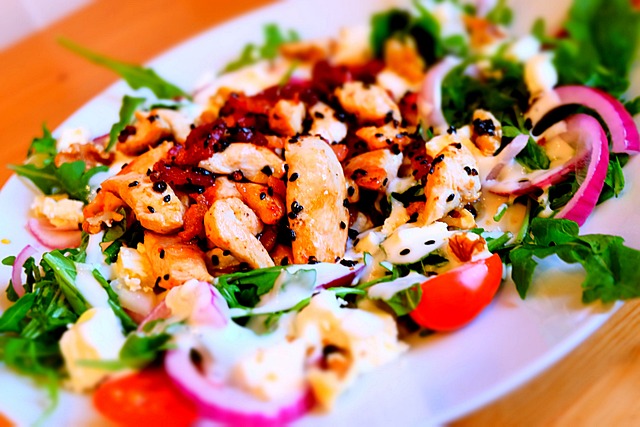
I started on my ketogenic diet journey to regain control of my health. Weight was a primary driver in this decision. What is the keto diet? It is designed to change your body’s metabolism to a state called ketosis.
Your body burns fat for fuel instead of carbohydrates in this metabolic state. This metabolic switch is key to weight loss. Keto works by switching the primary source of energy your body burns from carbs to fat. So keeping carbs pretty low is important.
What worked for me was limiting my net carbohydrate intake to under 50 grams per day, which is a key factor in both entering and maintaining a state of ketosis!
Basics of Ketogenic Diet
The ketogenic diet is centered on severely limiting carbohydrates. In fact, you should strive to stay under 50 grams a day! My typical macronutrient ratio aligns with the common keto standard: around 60% fat, 35% protein, and only 5% carbs.
This change is what starts ketogenesis. Through this mechanism, the liver changes fat into ketones, which become the body’s and brain’s main source of energy. Within a few days or weeks of starting this diet, I started feeling an incredible difference in my body.
It quickly adjusted to burning fats and ketones for fuel, a huge turning point in my successful long-term weight loss journey.
Benefits for Weight Management
Of all the short-term benefits I saw, the biggest was the quick initial weight loss thanks to lessened water retention. During the long-term maintenance phase, the predominant source of this weight loss was fat metabolism.
Better glucose control helped my body support my weight management goals. As reported by real users, the average weight loss on this diet ranges from 1 to 10 pounds or even higher.
This matches up with what I’ve seen personally.
Key Principles for Effective Weight Loss
To stay in a state of ketosis and achieve optimal weight loss, restricting carbohydrates is imperative. This is one reason why I track my macronutrients and make adjustments accordingly to get the best results.
When we introduced regular physical activity, the results were amplified tremendously. It surprisingly left me feeling less tired and more ambitious, too!
It is important to understand that research has demonstrated the ketogenic diet to be as effective for weight loss as a low-fat diet. In reality, some research shows that those on keto lose much more weight than subjects on low-fat diets.
Keto aids weight loss through ketosis.
Optimizing Fat Sources in Keto Recipes
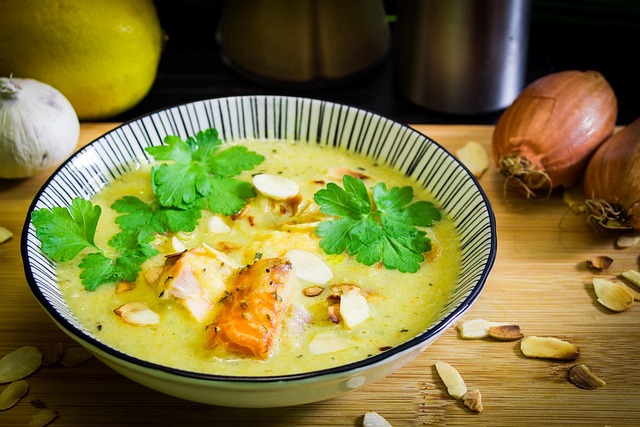
When I first began my ketogenic journey, I found it incredibly challenging to determine which types of fats were most beneficial. This one tidbit was a huge breakthrough for me on the health and weight loss front! The ketogenic diet is a very high-fat diet, often around 70% fat, 20% protein, and 10% carbohydrates.
It’s true—up to 80 percent of your daily calories can be from fat! For optimal nutrition, it’s important to distribute healthy fat intake evenly throughout the day. The types of fats we use can play a role in controlling satiety levels, as well as overall calorie intake. Choosing the best ones is essential to sustaining a healthy lifestyle and maximizing weight loss.
1. Choosing Healthy Fats
Having more monounsaturated and polyunsaturated fats such as olive oil and avocado oil in my meals has helped. Fats like these promote cardiovascular health while playing a protective role in metabolic function. I recommend keeping saturated fats within the heart-healthy range but still low enough to stay keto-friendly.
Replacing fats with omega-3 rich sources such as fish oil has hugely improved health. In fact, research like this study from Harvard has shown that when these favorable fats are eaten, they can reduce the risk of heart disease.
2. Balancing Omega Fatty Acids
Keeping a good ratio of omega-3 to omega-6 fatty acids has always been key for us. I focus on getting more omega-3s with dietary sources such as fatty fish and flaxseeds. Maintaining an omega 3:6 ratio has been shown to help with inflammation, and that’s something I’ve personally experienced through this journey.
By choosing fats from animals raised on pasture or grass-fed sources, you increase your consumption of the best omega-3 to omega-6 fat ratios. These fats have higher antioxidant levels!
3. Incorporating MCT Oils
MCT oils have been a great source of energy for me. They’re rapidly turned into ketones, keeping me in ketosis. I use MCT oil in coffee or smoothies for a convenient way to increase my intake.
This not only promotes an increase in energy levels, it aids in weight loss efforts.
4. Using Avocado and Nuts
Avocados have experienced an impressive ascent in the keto world. Their versatility as a source of healthy fats and fiber for that matter make them an indispensable addition! Almonds and walnuts are great keto snacks I always have on hand.
These foods are full of vitamins and minerals, so they’re nutritionally advantageous.
5. The Role of Coconut Oil
I’ve found that coconut oil’s medium-chain triglycerides have seriously upped my metabolic processes. As a result, I started using it more in my cooking and baking, for flavor and health benefits.
Coconut oil is an easy and delicious source of fat, providing 104 calories, 11.5g fat, and 0g carbs per tablespoon. It aids weight-loss efforts by enhancing satiety.
Smart fat choices enhance keto success.
Ingredient Substitutions for Enhanced Flavor and Accessibility
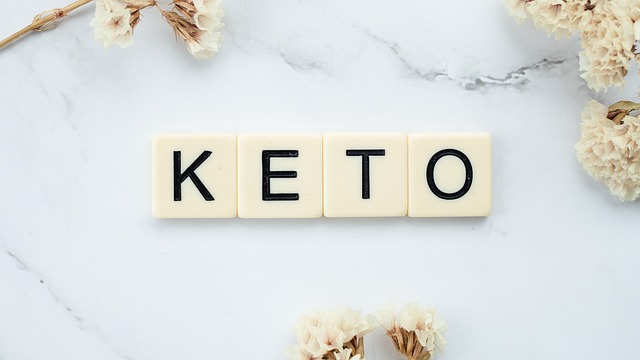
On my path with the keto lifestyle, I learned that finding the right replacements is key. These substitutes make the diet just as effective! Swapping out high-carb ingredients helps me maintain a state of ketosis while keeping my meals diverse and delicious.
Instead of focusing solely on restriction, we need to focus on making the diet more tasty, healthy, and sustainable. I hope all of you will experiment with ingredients to find out what works best for your taste buds and nutrition goals.
Replacing High-Carb Ingredients
I’ve been replacing all-purpose wheat flour with almond or coconut flour for years. These substitutions help me create the wonderful low-carb, low-sugar treats that I enjoy! For instance, swapping in almond flour to make my all-time favorite cookie recipe has given these treats a wonderful texture without the carbohydrate overload.
Cauliflower rice has quickly become a favorite ingredient in my kitchen, and it is the ideal replacement for traditional rice. It’s super versatile and can be cooked up to use in stir-fries or as a base for delicious protein-packed bowls.
Another swap I’m a big fan of is replacing traditional pasta with zucchini noodles. They’re super simple to whip up and bring a fresh new flavor to old favorites.
Using Herbs and Spices for Flavor
Adding herbs like basil and rosemary to my recipes brings a burst of flavor without adding carbs. I enjoy adding fresh basil to my keto-friendly pizzas for an Italian flair.
Spices such as turmeric and cumin not only enhance the taste of my dishes but offer health benefits. Turmeric adds a vibrant color and anti-inflammatory properties to my curries. I recommend playing around with different combinations to find your favorite flavors.
Affordable and Accessible Substitutes
Eggs are my personal favorite—I can’t think of a more flexible, economical, protein-rich food. I like to batch-cook egg muffins for an easy breakfast to grab and go during the week.
Cabbage is another economical choice that I’ll use as a wrap or in stir-fries, subbing in for pricier vegetables. Frozen vegetables are another excellent option—they’re just as nutritious and easier on the wallet too.
I always have a bag of frozen spinach on hand to throw into smoothies or omelets.
Substitutions enhance the keto diet’s flavor and accessibility.
Impact of Cooking Techniques on Satiety and Effectiveness
Cooking techniques are extremely important on the ketogenic diet. They can prevent the degradation of nutritional value in meals, while increasing their satiety and overall effectiveness for weight loss. What I’ve experienced as a cook is that techniques like braising or stewing will help break down protein and fiber, making food more satiating.
Credible evidence supports that the ketogenic diet primarily consists of high-fat, low-carbohydrate foods. Encouragingly, this same approach has been shown to support weight loss and better glycemic control among patients with type 2 diabetes.
Slow Cooking for Enhanced Flavor
Slow cooking has really changed the game for me. Slow cooking renders tougher cuts of meat fork-tender and flavorful. I use my slow cooker to make a big batch of meals ahead; this saves so much time when you’re cooking all your meals!
The cooking process in slow cooking lets flavors combine beautifully, intensifying the flavor of all your dishes. This approach provides preliminary evidence for the notion that slow cooking techniques improve satiety. They accomplish this by thoroughly rendering the tough connective tissue found in meat.
Grilling for Healthier Meals
So, grilling is another technique that I can’t extoll the virtues of enough. It not only cuts the fat in meats, it gives them that smoky flavor which I adore. I rely on marinades with healthy herbs and spices to give the meals more flavor without the carbohydrates.
The health benefits are clear: grilling requires less added fat, aligning with the keto principle of minimizing carbohydrate intake.
Baking vs. Frying in Keto Cooking
So as you can probably guess, baking has become my preferred method over frying. It’s a better-for-you option that cuts out the need for added oil. In addition to roasting vegetables, I like to bake keto-friendly snacks, such as cheese crisps.
As you can see, selecting appropriate fats for baking is very important to ensure that you continue to stay keto compliant. This strategy aligns with our research that indicates high-heat cooking techniques may reduce nutrient density and satiety.
Choose wisely to enhance your keto journey.
Tailoring Keto Recipes for Dietary Restrictions
Vegan or allergy-friendly ingredients are important to adapt keto recipes for those of us living a healthy lifestyle. It’s magically effective at helping us navigate stringent food restrictions! That’s the amazing flexibility of the keto diet!
It’s good for people with special dietary needs, and it encourages inventiveness in finding ways to satisfy both keto and additional dietary requirements. What I learned from my experience was that getting into a low-carb lifestyle is a two or three-week process.
It’s important that we take out all those processed carbohydrates and swap them out with high-quality fats.
Gluten-Free Keto Options
We have terrific gluten-free options using almond flour or coconut flour here on the blog. They do great in baking, too! Shirataki noodles are my favorite substitute in any pasta dish; they make a yummy satisfying gluten-free keto option.
Always look for hidden gluten in processed foods by reading labels! Or, like most things in life, it can creep into our diets in surprising ways.
Dairy-Free Adaptations
Going dairy-free doesn’t have to come at the cost of flavor. I replace it with coconut milk or almond milk, and nutritional yeast gives it that cheesy flavor I’m obsessed with.
I need to find dairy-free fats that fit my keto needs. This allows me to stay in line with a high-fat diet without the need to sacrifice my dietary restrictions.
Nut-Free Alternatives
For those of us allergic to nuts, seeds such as sunflower or pumpkin seeds make excellent replacements. Now, all my baking is done with coconut flour!
It’s nut-free and provides an interesting crunch. It’s important to seek out other sources of healthy fats that help achieve the balance required for a keto diet.
Vegan Keto Recipes
As someone who is vegan, I’ve found that tofu or tempeh are great protein options to add to my keto dishes. In my diet, I depend on avocado oil and coconut oil for the bulk of my fats.
They allow me to remain Keto and Vegan at the same time. Getting enough protein on a vegan keto diet might be difficult! It is doable, with some forethought and by including plenty of plant-based foods—especially legumes—in moderation.
Keto can adapt to your needs.
Integrating Portion Control and Meal Timing
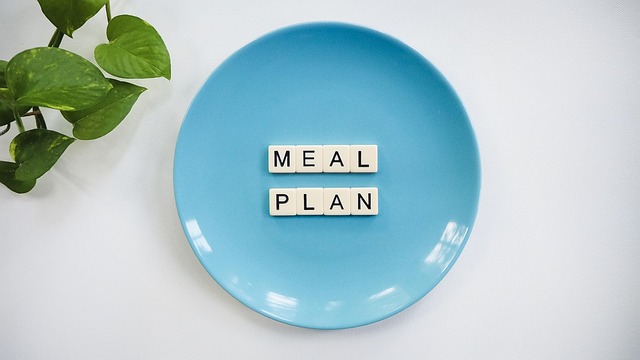
Through my own experience on the ketogenic diet, I learned that calorie control isn’t just about what you eat. It’s about portion control and meal timing! Portion control is key on keto! It assists you in keeping your carbohydrate intake within the range of 20-50 grams per day based on a 2,000-calorie-per-day diet.
This has proven to be the key for me to keep this diet working for weight loss. It has done wonders for my glycemic control, something that could be expected for anyone with type 2 diabetes. Timing my meals, or meal timing, has had a great impact on jumpstarting my metabolism. Eating at the same time every day allows my body to modulate appetite and metabolism better.
It is this predictability that helps me stay true to my eating plan!
Strategies for Portion Control
I find using smaller plates really helpful. It visually tricks my mind into feeling satisfied with less food. I weigh and measure all my food portions in order to maintain the keto macronutrient ratios.
Usually, those ratios are 5-10% carbs, 70-75% fats and 15-20% protein. A particularly effective strategy for me is to listen to my hunger cues and stop when I’m full. It’s all about being more in touch with what my body is telling me instead of just mindlessly eating.
Optimal Meal Timing for Weight Loss
Consuming most calories during times of higher metabolic rates is a strategy I’ve personally experienced great results with. I plan my meals further apart to keep my energy consistent during the day. This keeps me from getting super hungry and over eating.
I’ve personally found integrating intermittent fasting with keto to be interesting. It does appear to increase my weight loss—by prolonging the time each day that I’m not eating any calories!
Snacking Smartly on Keto
For snacks, I eat keto foods such as cheese, nuts and avocados. Having these snacks ready ahead of time stops me from grabbing a high-carb snack for convenience. I try to select snacks that help me meet my macronutrient targets for the day.
This way, they do my diet a favor instead of sabotaging it.
Mindful eating enhances keto’s effectiveness.
Incorporating Nutrient-Dense, Lower-Calorie Ingredients
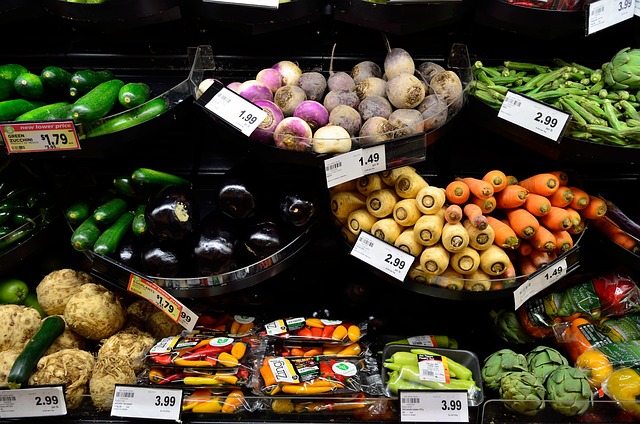
Through my experience following the ketogenic diet, I’ve learned just how important it is to incorporate nutrient-dense, lower-calorie ingredients. These decisions allow me to dodge the load of extra calories. By using these strategies, I am successfully losing weight.
It does make sure I’m getting some of those important vitamins and minerals. Personally, I’ve discovered that integrating avocado into my meals helps me strike this balance seamlessly. It’s high in good fats and fiber!
Adding Leafy Greens
I’ve developed a simple practice of adding leafy greens such as spinach and kale to almost everything I eat. These veggies are extremely low in calories yet packed with nutrition, which makes them perfect for weight loss.
I like to use them as a bed for salads with protein or in a meal as an easy side. Not only do they bulk up my meals, but they keep me feeling regular and support my overall health.
Substituting in cauliflower as a low-carb substitute for grains has really changed the game for me.
Using Berries Sparingly
I’ve really enjoyed getting back to berries such as raspberries and blackberries. I just don’t need them, and I use them sparingly because I try to limit my carb consumption!
I like to pair them with high-fat foods such as whipped cream or butter to remain in ketosis, but still enjoy their delicious sweetness. It’s just a matter of very closely watching my carb intake to match my weight loss goals.
Incorporating Lean Proteins
I use lean proteins, such as chicken breast and turkey, to keep fulfill my protein needs without the additional fat. These proteins allow me to keep my meals lower in calories as I work to maintain my muscle and lose weight.
Finding balance with my protein has been a game-changer. I have fun recreating dishes like keto sesame chicken using arrowroot—it’s both rewarding and tasty!
I’ve worked nutrient-dense, lower-calorie ingredients into my diet. The addition of asparagus, a great source of bone-building calcium, and salmon, which is loaded with omega-3 fatty acids, has really boosted my nutritional score.
I make frequent use of flavorful herbs and spices to add flavor and interest without the calories. I add healthy oils too — avocado and olive oil — for healthy EFAs. Even peanut butter has made the cut, providing some protein and monounsaturated fats to my meals.
Nutrient-dense choices fuel my keto journey. %%%
Adapting Cultural and Regional Recipes to Keto
Adapting my favorite cultural dishes to make them keto-friendly is a priority. It infuses the diet with more variety and fun, thus making it more sustainable. I hope you’ll experiment and get creative to make these time-honored recipes into keto-friendly favorites.
This is what helps me preserve my culinary roots and get results with my lifestyle. Adapting keto to cultural and regional recipes takes some imaginative thinking. That can be anything from adapting cooking methods to making ingredient swaps, like using cauliflower rice in place of regular rice.
American Comfort Foods on Keto
My tip to people is to take a dish that traditionally uses potatoes, like mashed potatoes, and replace them with cauliflower. This easy change lets me dig into the cozy goodness of mashed potatoes like I used to—without the carbs.
Just like I suggest when making keto comfort foods, cheese and bacon will always add flavor! Each of these ingredients contributes flavor, richness and satisfaction to my meals. It’s a great way to ensure you stay satisfied while perfecting your keto diet.
Mediterranean Keto Dishes
I suggest including plenty of olive oil and avocados as main fat sources in Mediterranean keto dishes. These nutritious fats are perfect in keto Mediterranean dishes since the Mediterranean diet is all about heart-healthy eating.
Then I’d recommend using a lot of seafood and lean meats as your protein source. The health benefits of a Mediterranean-inspired keto diet, like improved heart health, are huge motivators for me.
Asian-Inspired Low-Carb Meals
When using soy sauce in keto Asian recipes, for example, I recommend using coconut aminos to keep them lower-carb. This is one substitution that truly helps me keep all of the savory flavors that I enjoy so much in Asian cuisine.
For Asian-inspired low-carb meals, I suggest swapping cauliflower rice for regular rice. Getting that balance of flavors using keto-friendly ingredients is always the key for me when adapting Asian recipes.
Creativity is key. %%%
Potential Pitfalls and Mitigation Strategies
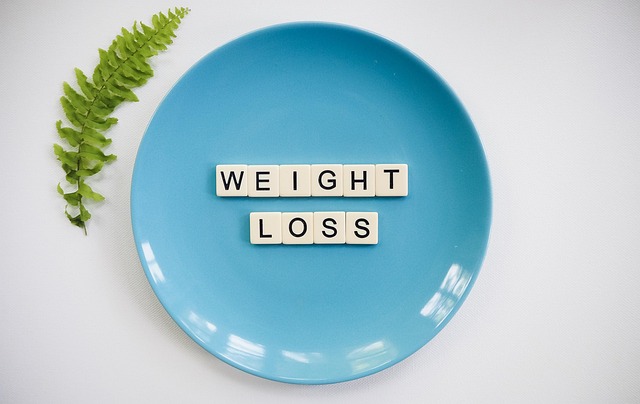
First off, I originally started the ketogenic diet to lose weight. As I began to work in this new environment, I realized that while these benefits were large, there were still plenty of challenges to overcome.
Needless to say, I’ve come to appreciate these potential pitfalls better. This information has been invaluable in keeping me from straying and quitting this lifestyle.
Avoiding Nutrient Deficiencies
One of the biggest challenges I found was getting enough of the nutrients that are essential to consume. This is because a low-carbohydrate diet is deficient in fiber, B vitamins, and nutrients such as iron, magnesium, and zinc.
To remedy this, I began taking a daily multivitamin to help cover any nutritional deficiencies. One of the things I focused on was the different colors of vegetables I could work on. Spinach and kale are two of my favorite choices as they are both very high in micronutrients!
As a vigilant young lady, I diligently observed my body for early signs of deficiencies. When I start to feel tired or any of those other signs, I immediately up my diet with more nutrient-rich foods.
Managing Keto Flu Symptoms
Going into ketosis introduced what’s often referred to as the keto flu, with fatigue, headaches, and brain fog. To alleviate these symptoms, I prioritized hydration and replenishing electrolytes using bone broth and mineral-rich salts.
Making the move to keto slowly and lowering my carb count slowly made the switch a lot smoother. For me, focusing on rest and self-care during this initial adjustment period was a game changer in how I was feeling.
Ensuring Long-Term Sustainability
Maintaining the keto diet over the long term requires finding keto-friendly versions of my favorite foods, like using almond flour for baking. Meal planning and prepping have been two of the most important strategies for keeping my keto goals on track.
Setting attainable goals and enjoying the little successes en route to the finish line has helped me stay inspired and focused on this lifestyle.
Proactive planning is key. %%%
Glycemic Index and Its Role in Keto Recipes
During my time following the keto lifestyle, I’ve realized the importance of understanding glycemic index (GI). This background gives me the unique ability to create delicious keto recipes that assist with weight loss. The GI is a measure of how quickly a food increases blood glucose.
This becomes increasingly important in keto recipes, where carbs are restricted. Low GI foods digest/absorb slowly and cause blood sugar levels to rise at a slower rate. Understanding this has been key to how I choose my ingredients to stay the course of my health journey.
Understanding Glycemic Index
The glycemic index is one of the tools I use to help determine how different carbohydrates will affect my blood sugar. That’s why I avoid high GI foods that create the peaks and valleys that can kick you out of ketosis. In this state, my body burns fat for fuel rather than carbohydrates.
If you’re looking to dive deeper, I suggest visiting the University of Sydney’s GI database. Furthermore, apps like Glycemic Index & Load Diet Helper have been really helpful!
Low GI Ingredients for Keto
Having low GI veggies such as broccoli and cauliflower on hand have really changed the game, allowing me to incorporate lots of non-starchy vegetables into my recipes. Likewise, nuts and seeds—both of which have a low to glycemic impact—have become healthy staples in my kitchen.
Using these ingredients not only helps me maintain ketosis but also supports my weight loss efforts by keeping me full and satisfied.
Impact on Blood Sugar Levels
When I make an effort to eat low GI foods, my blood sugar levels are extremely stabilized and I’m well within the normal range. This helps me keep my weight in check. This strategy can further help to boost insulin sensitivity, a key element to overall metabolic health.
My advice would be to test your blood sugar to see the real life results of these dietary adjustments in real time. As you can probably guess, GI plays a large role in guiding my keto recipe choices to maximize weight loss efforts.
Evidence-Based Practices and Innovations in Keto Cooking
Throughout my time following the ketogenic lifestyle, I have personally felt the difference that keeping up-to-date with the latest research and innovations can make. This is what really helps people succeed with their weight loss goals! Cutting carbs isn’t the entirety of the solution.
Get ready to adopt a comprehensive, evidence-based approach that will influence how you cook on a day-to-day basis!
Latest Research on Keto and Weight Loss
As a result, recent research demonstrated just how effective keto diets can be. A small study published in the Journal of Clinical Endocrinology & Metabolism provided a surprising answer. In this study, participants on a keto diet lost 2.6 times more weight than those on a low-fat diet after 12 weeks.
This study adds to an emerging body of research that suggests keto may be a long-term solution for successful weight loss and maintenance. When looking at long-term studies, keto diets appear to be harmful. Sustaining them means paying close attention to nutrient intake to prevent deficiencies.
I stick to trusted sources such as the National Institute of Health and other peer-reviewed journals. This supports me to remain up-to-date, and keeps my information fresh and trustworthy.
Innovative Cooking Methods
Sous-vide cooking has found a place in my kitchen, allowing me to cook with pinpoint temperature control, protecting the nutritional value of my meals. This technique works wonderfully for cooking all types of meats and fish, ensuring they remain flavorful, tender, juicy, and all while losing the least amount of nutrients.
Air frying has really changed the cooking game for me. It enables me to make crispy-fried-like foods without all the oil, which is a much healthier option than frying. It’s one thing to create flavor with beautiful techniques, but it’s another thing to improve the nutritional quality of my meal.
Enhancing Nutritional Value Through Cooking
To get the most nutritional value out of my keto meals, steaming a lot of my veggies is a great option. This technique maintains their nutrient value, which can be destroyed by other forms of cooking.
I’ve just touched on fermentation as another art form. It’s incredibly effective especially with things like sauerkraut and kimchi, increasing the probiotics and even increasing the bioavailability of nutrients!
That’s why I emphasize cooking methods that help us retain and even maximize nutrient content. That’s how I keep my keto plan healthful, effective, and exciting.
Staying informed enhances keto cooking success.
Conclusion
I’ve lost over 135lbs+ and learned so much about keto cooking and weight loss – it’s truly been an amazing experience! From there I just learned what the right fats were. I used to modify recipes to work with my dietary restrictions, and each little adjustment has continued to inch me closer to my health goals. Preparing meals with wholesome, nutrient-dense ingredients helps me feel satisfied and energized. It gives my meals a tasty punch! Additionally, learning how to make traditional dishes from other cultures keto-friendly has helped keep me entertained and inspired in the kitchen. I’ve definitely stumbled here and there on my journey, but understanding the common traps in advance has helped me stay focused. Today, I’m more inspired, informed and equipped to go down this road. If you’re thinking about going keto for weight loss, join me on this journey! Let’s help healthy eating be enjoyable AND powerful!
Frequently Asked Questions
What is the keto diet and how does it aid in weight loss?
What is the keto diet and how does it work to help you lose weight. It aids in weight loss by using fat stores for energy rather than carbohydrates. This is how the keto diet helps you feel less hungry and lose weight more quickly!
How can I optimize fat sources in my keto recipes?
Don’t be afraid of using healthy fats such as avocado oil, coconut oil and butter. These fats add flavor and keep you in ketosis, which is essential for weight loss.
What are some ingredient substitutions for keto recipes?
Swap out sugar for an all-natural stevia or erythritol blend. Replace with almond flour or coconut flour. These substitutes add a delicious touch while allowing you to stay low-carb.
How do cooking techniques impact the effectiveness of keto recipes?
Satiety Cooking methods, such as slow-cooking, can help improve satiety. Less oil is absorbed by grilling or roasting, which helps keep meals nutrient-dense and more conducive to weight loss efforts.
How can I tailor keto recipes to fit dietary restrictions?
If making for an allergy, substitute with nut-free alternatives. To make this recipe vegan, use coconut milk yogurt and butter. Personalizing recipes makes sure they not only fit your dietary restrictions, but that they’re appropriate for keto as well.
Why is portion control important in keto meal planning?
Why is portion control important in keto meal planning? It helps you avoid overeating, which allows you to remain in ketosis for a longer period.
How can I adapt cultural recipes to fit a keto diet?
Find low-carb substitutes for high-carb foods. As a quick example, swap cauliflower rice into any Asian cuisine. This puts a keto twist on all those traditional flavors to help you maintain a keto lifestyle.
